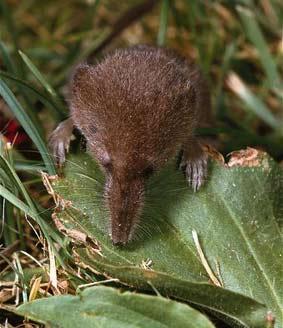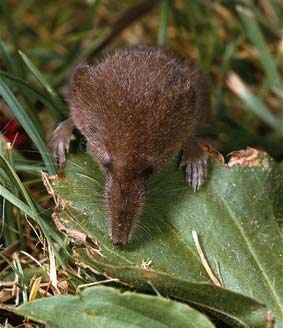Nature: A Little Stuffed

Éanna Ní Lamhna on the smallest mammal of them all, the ever-hungry pygmy shrew
Last week I outlined the strategies that many animals use to survive winter – hibernation, migration, omnivory. They are all very good strategies in their own ways and ones which ensure the survival over the winter of many animals. But what of the creatures that have no clever tricks up their sleeves – the ones which go on as before, trying to make the best of a rapidly deteriorating situation? Like our smallest mammal, the pygmy shrew – how does it manage during cold short winter days?
This mammal is really very small, about half the size of a house mouse. Unlike the house mouse, which can eat all sorts of domestic comestibles from candle wax to cornflakes, the pygmy shrew is a carnivore and only eats meat. Such items as beetles, woodlice, flies, spiders and small insect larvae feature in the main on their menus. Because pygmy shrews are so tiny, they have a very high metabolic rate and must eat enormous quantities of food to keep going.
The pygmy shrew eats its own weight in food every day. Mind you, for a pygmy shrew this is not much – it weighs a mere four to five grams – but because its body is so small, it is constantly losing heat and must eat all the time. If it doesn't have any food for three hours it will die of hunger. So it must search for food constantly – day and night – only allowing itself short naps. You can see how hibernation is certainly not an option for this poor creature.
This fast and furious life doesn't last long. Young born at the end of August will be weaned at about 21 days and weigh 2.5 grams at this stage. By foraging furiously and gobbling every woodlice and spider in sight, they may reach a respectable four grams by the start of winter. But it's hard finding food in cold weather and only about a quarter of them will make it through to spring. Those that don't die of hunger may be killed and eaten by owls or just killed and thrown aside by cats and foxes who don't like the taste of them. Apparently they have pretty pungent scent glands, which the cat and fox don't seem to notice until the poor beast is dead.
If they make it through the winter they will begin to breed the following spring and can give birth to several litters of up to five babies in each. They can live up to 13 months at best so they only ever have one winter to contend with.
The pygmy shrew is very common all over Ireland. You could quite easily encounter one as you sweep up the leaves in your garden. You will know it is not a mouse by its small size and its elongated nose. So no need therefore for hysterical screams and standing up on chairs.
